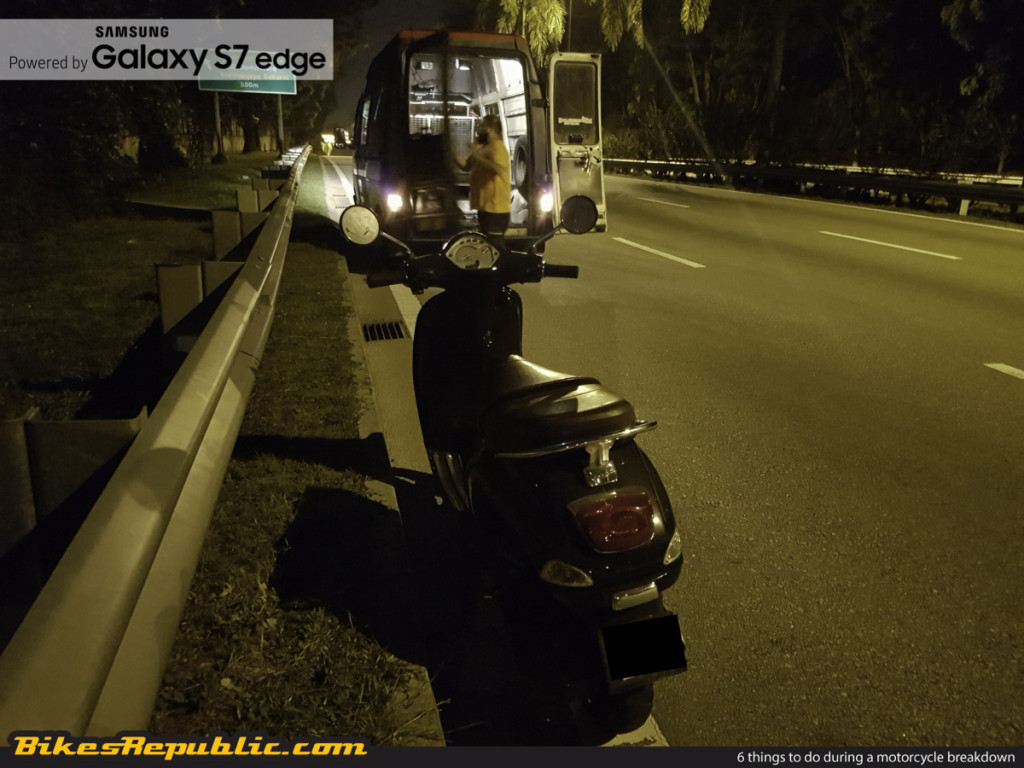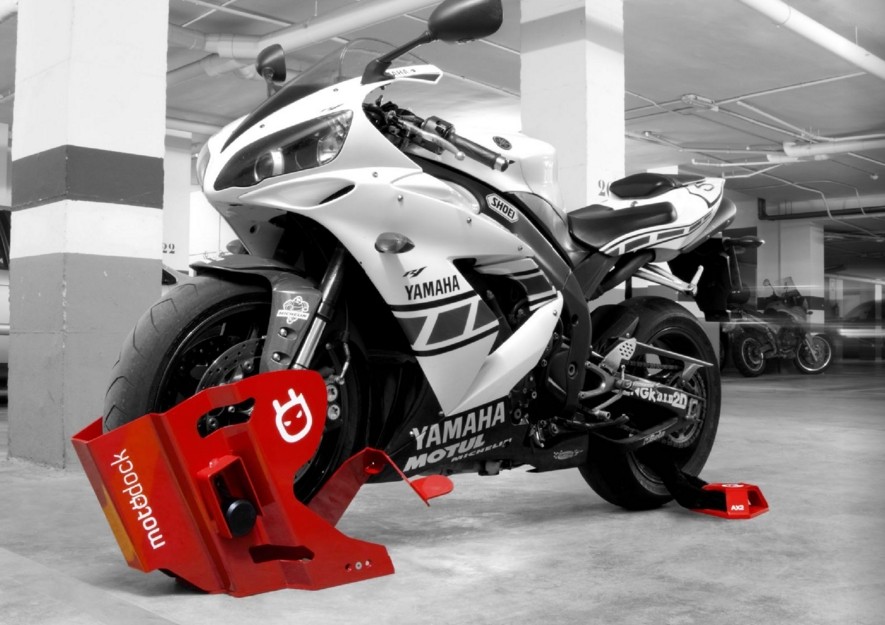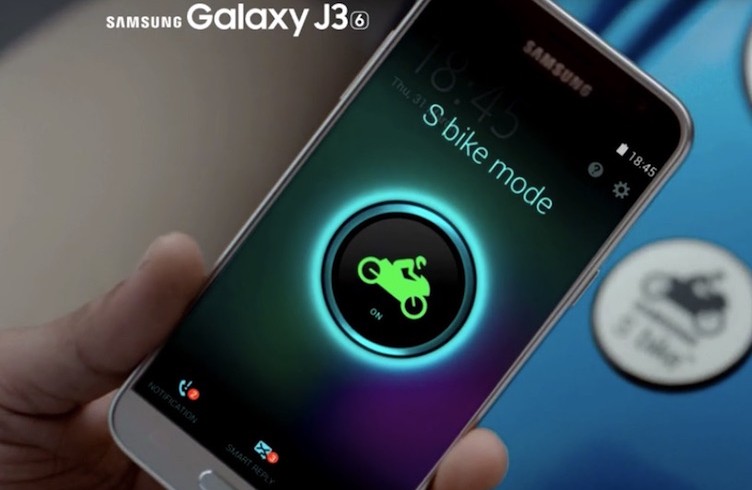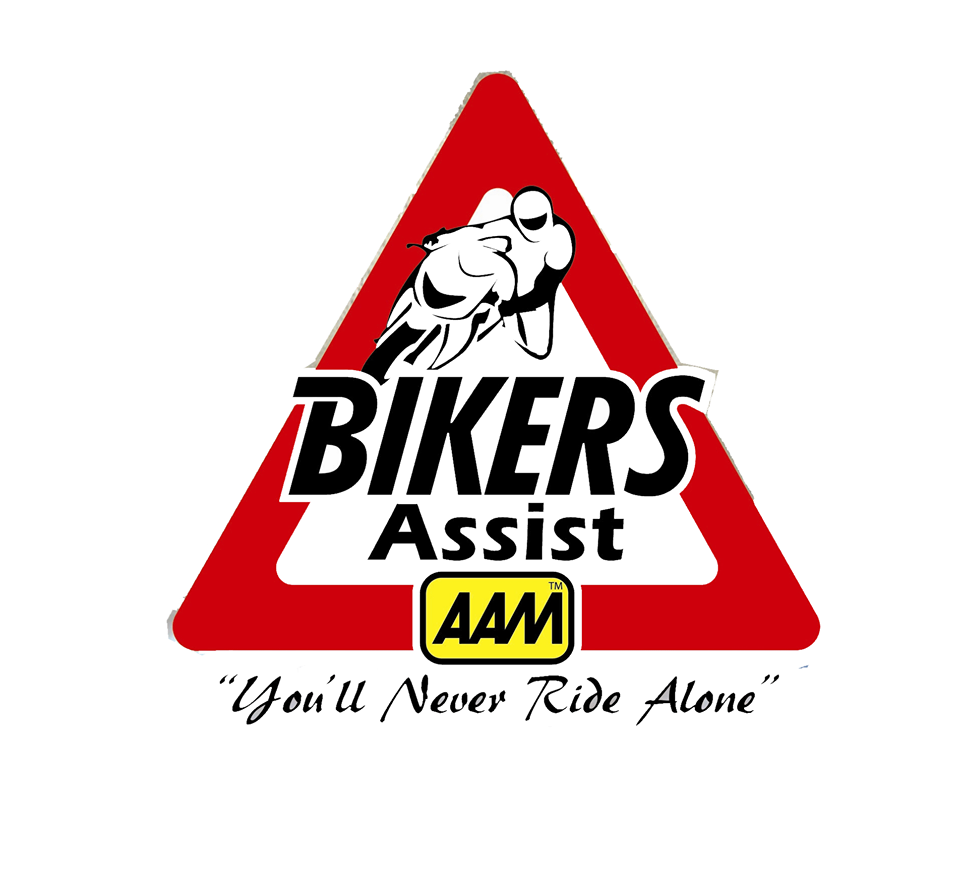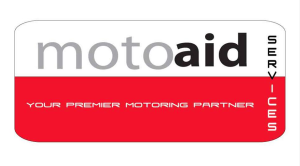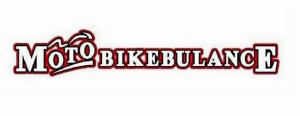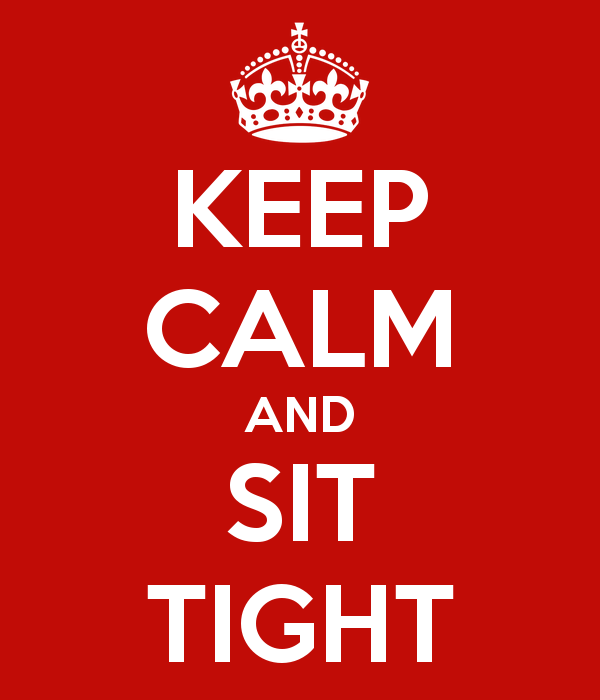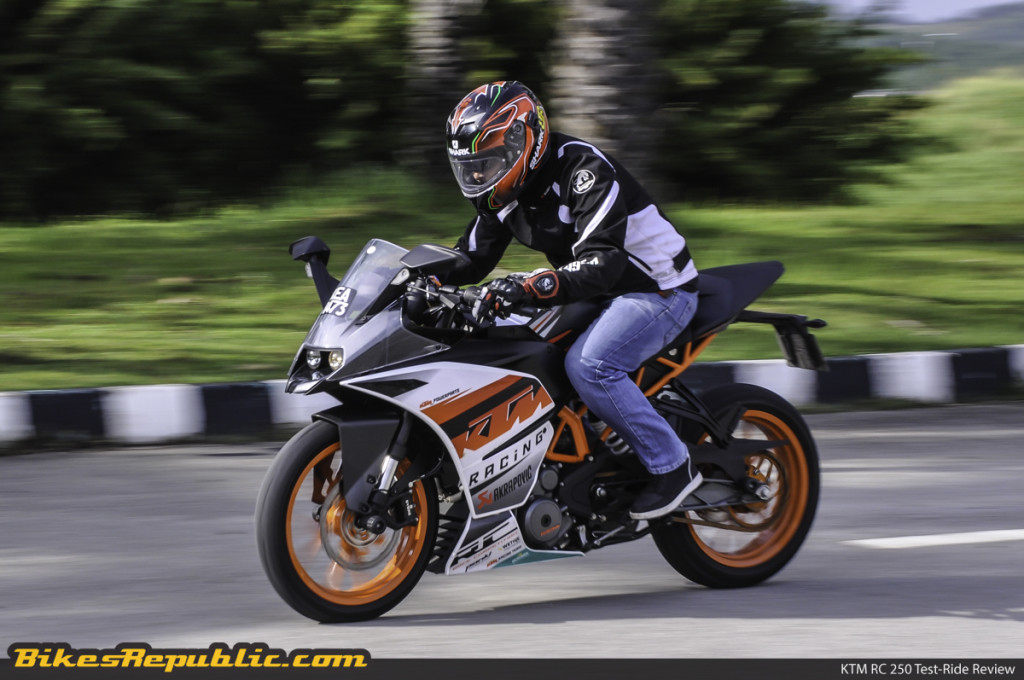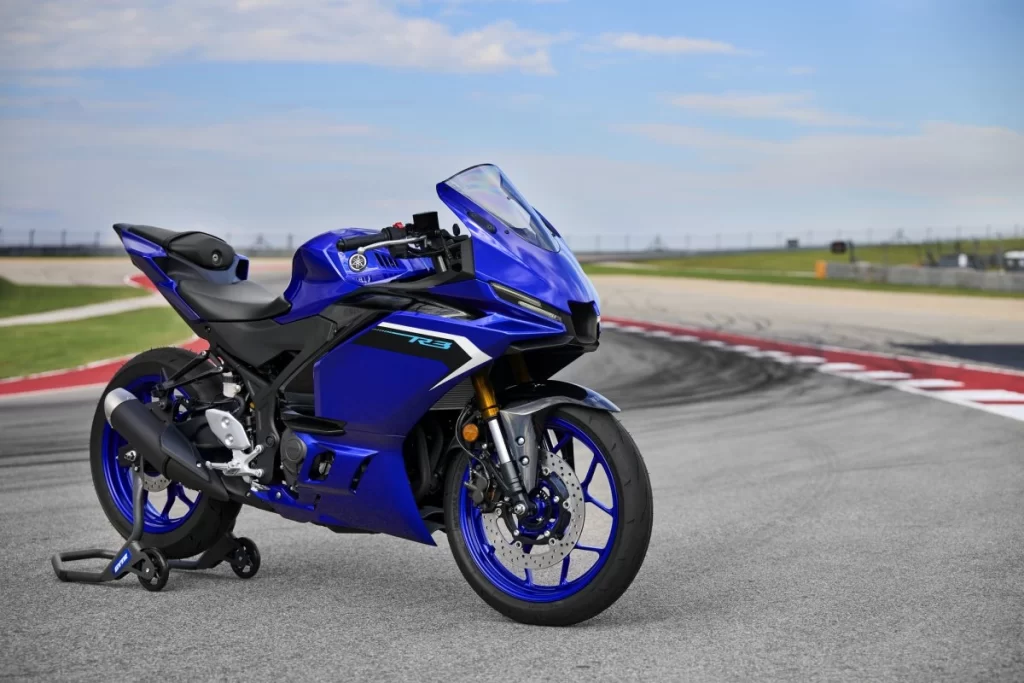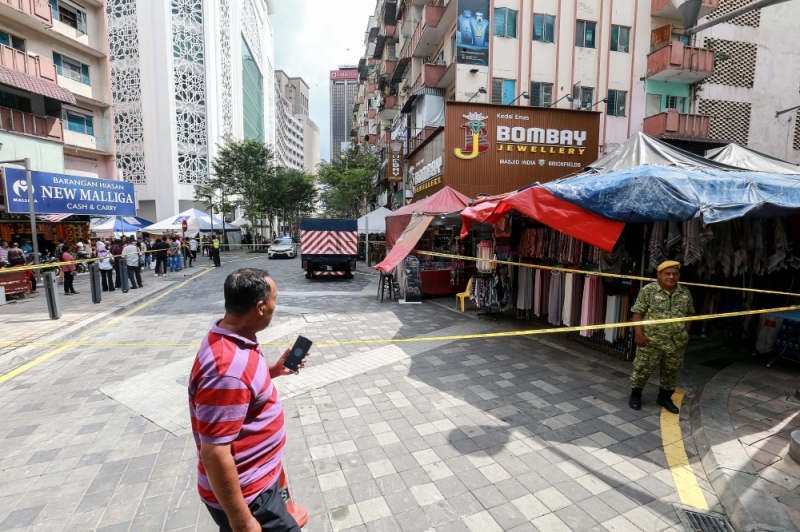A simple six-step guide of things to do during a motorcycle breakdown.
As hard as this may sound, motorcycle breakdown is a tough reality in motorcycling. Breakdowns can happen at any time of the day, but in most cases, it happens when you least expect it.
Even for the most seasoned of riders amongst us, we still find ourselves scratching our heads at what to do in situations as such. We’ve recently dealt with such a situation first hand, and we decided to use it as a learning opportunity not just for us, but for you, our loyal readers too.
This, along with our six-step safety riding guide for Hari Raya we published recently, could be the best reference for you when the inevitable happens, especially in times where a festive holiday is looming closer.
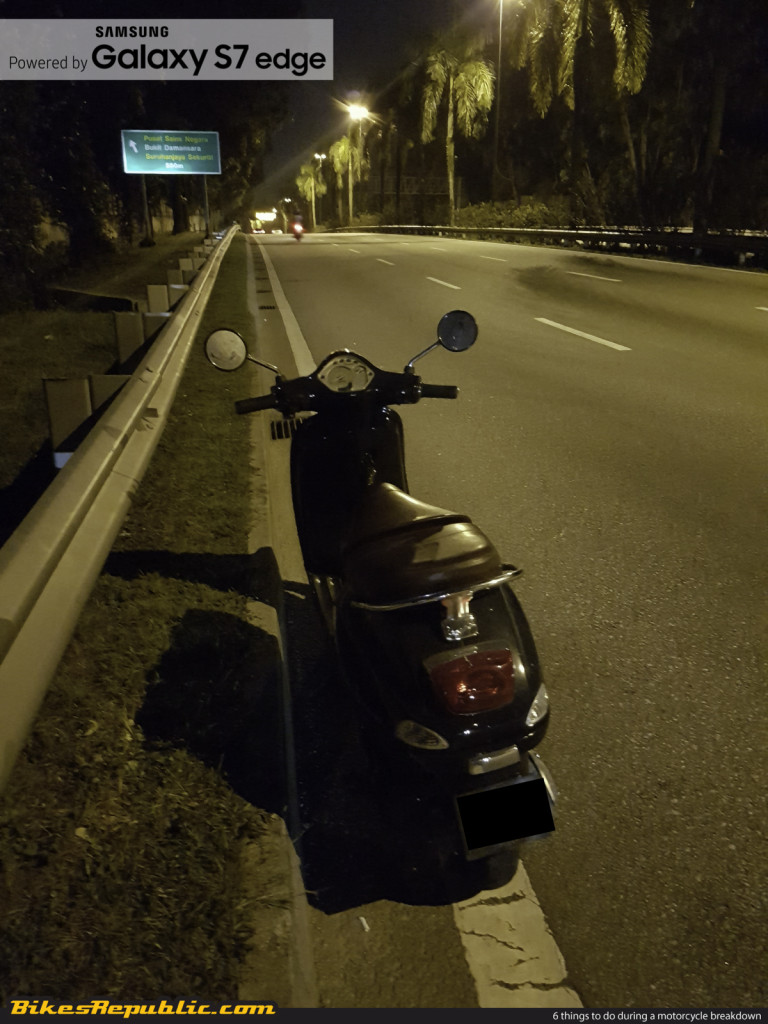
1. Look for a safe place to stop
Upon realising your bike has a problem, your first instinct should be to search for the first safest place to stop that’s nearest to you. Some of the ideal places include:
I. The emergency lane – yes, that’s what it’s really for, EMERGENCIES!
II. Bus stop
III. Highway lay-bys or rest stops
IV. Petrol stations
V. Popular commercial areas
Your main concern here should be getting out of harm’s way, which means getting out of the path of traffic safely. Signal others by using your signal blinkers or hazard lights (if equipped) and hand signals too if necessary whilst getting your bike and yourself to safety.
Ensure your spot is highly visible and well lit. Should this happen at night, by all means try to stop under a bright light source like right under a lamp post for example. Avoid places of poor visibility at all costs such as corners and dark spots.
2. Secure your bike and yourself
Once you’ve found a safe place to stop, immediately secure your bike in that spot. Drop your stand, engage it in gear if you’re on a gradient surface, and shut the engine down. This is also the best time to quickly assess your bike’s problem and ascertain if it is safe to continue riding or not.
If your bike is unridable, then ensure your essential belongings like your wallet, phone and important documents (NRIC, license, road tax, etc) are secure – you’re going to need all of those. Be alert and vigilant of your environment, especially if it is an area of high vehicle or pedestrian traffic.
Depending on the type of break down you’re suffering, keep good yet safe distance from your stricken bike if you have to.
Top Tip: have a big enough gap to stay out of danger yet close enough to keep your bike within clear visual range.
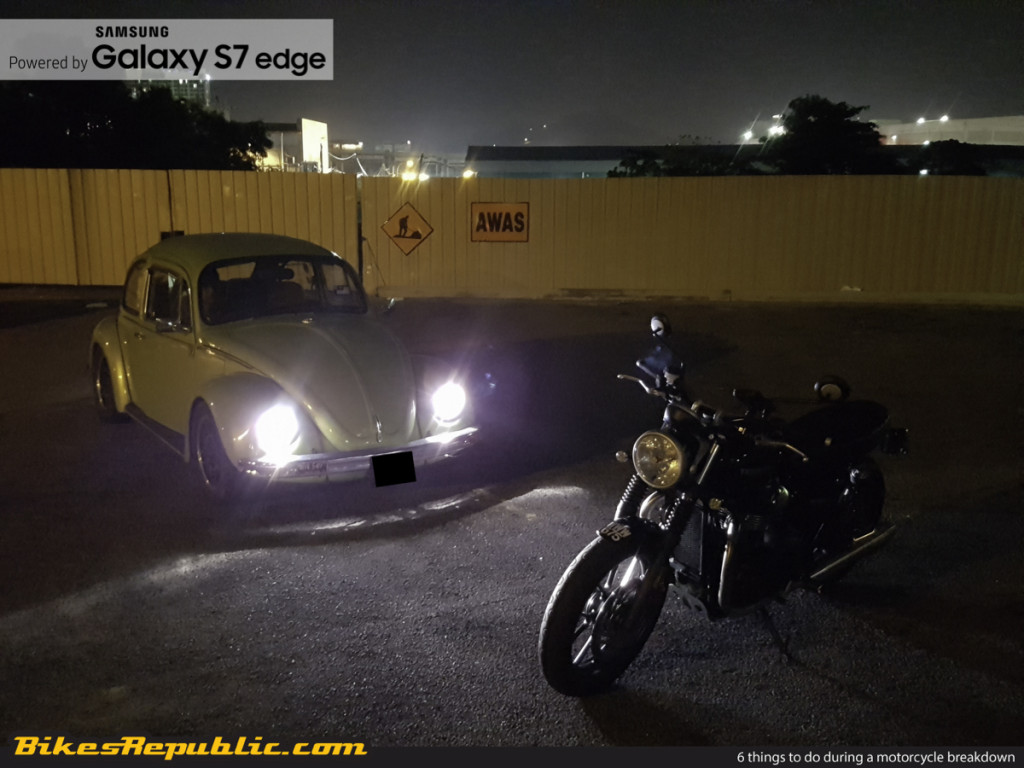
3. Stay visible at all times
In such situations, making yourself and your bike visible to others is essential, most especially at night. Firstly, engage your signal blinkers – at least one of them. If your bike comes equipped with hazard lights, then by all means engage them here.
Your next step is to ensure you and your bike stay visible at all times until help or rescue arrives. If your bike’s electrical systems have failed and you can’t activate any of your lights, then use any and every possible means to stay visible such.
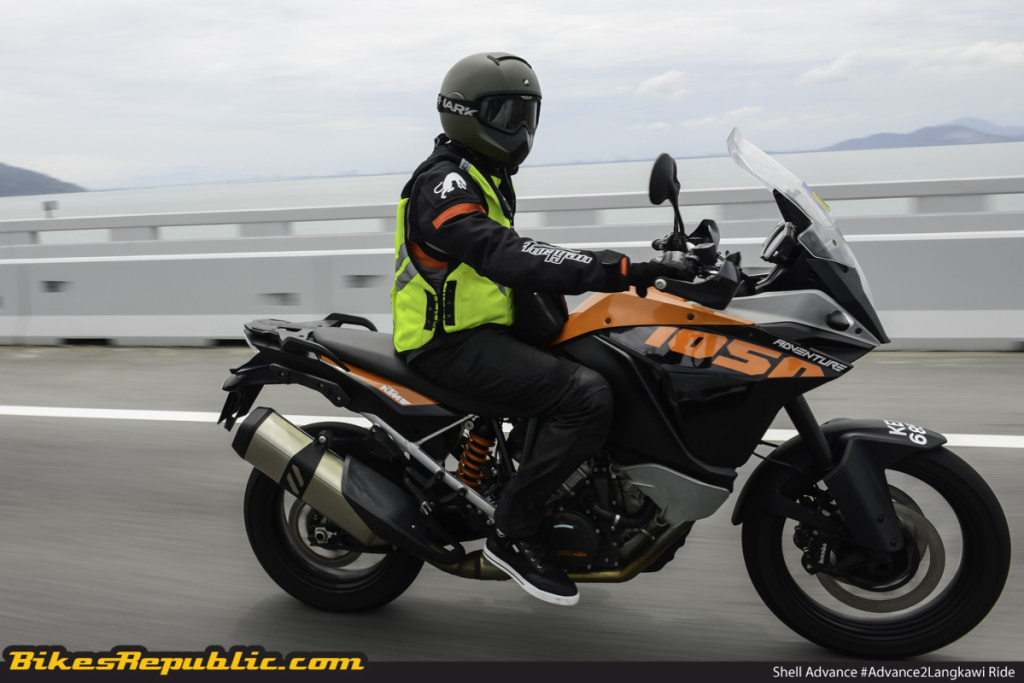
Top Tip: you can use your high-visibility jacket or vest, or even any bright coloured clothing or nearby object and turn them into makeshift signs or flags and signal others with it.
4. Call for help
Once you and your bike are safe, secure and clearly visible to others, call for help at your earliest convenience. In no particular order, here’s a list of people you should be calling:
I. Your insurance provider
II. Your mechanic
III. Your preferred vehicle rescue or towing service provider
IV. Any nearby relatives or friends with own transport
One thing we’d like to stress firmly to all bikers at the importance of purchasing insurance policies that offer 24-hour roadside assistance. In fact, a number of manufacturers also offer breakdown assistance that’s packaged together in your bike’s purchase deal.
Alternatively, you should call your usual mechanic and ask for his recommended vehicle rescue or towing service. There are plenty of third-party establishments that offer round-the-clock and nationwide motorcycle recovery. These include the likes of Motobike Ambulance, Moto Aid Services, as well as AAM Bikers Assist.
Lastly, call your nearest relative of friend with his/her own transport and ask for a safe ride home after getting your bike rescued.
6. Keep calm and wait until help arrives
Once you’ve made all the necessary calls, keep calm and sit tight until help arrives. When it does, be ready to smoothen the process by unlocking your handlebars, disarming your alarms, and have all your necessary documents ready for them to inspect.
Sadly, in this day and age, you’re bound to come across heartless opportunists, especially in such dire times. Do not be swayed by any individuals that ‘conveniently’ show up to ‘help’ you, especially ones that offer to do it quickly or cheaply. They can be persuasive at times, but firmly decline any advances as such until your designated help arrives.
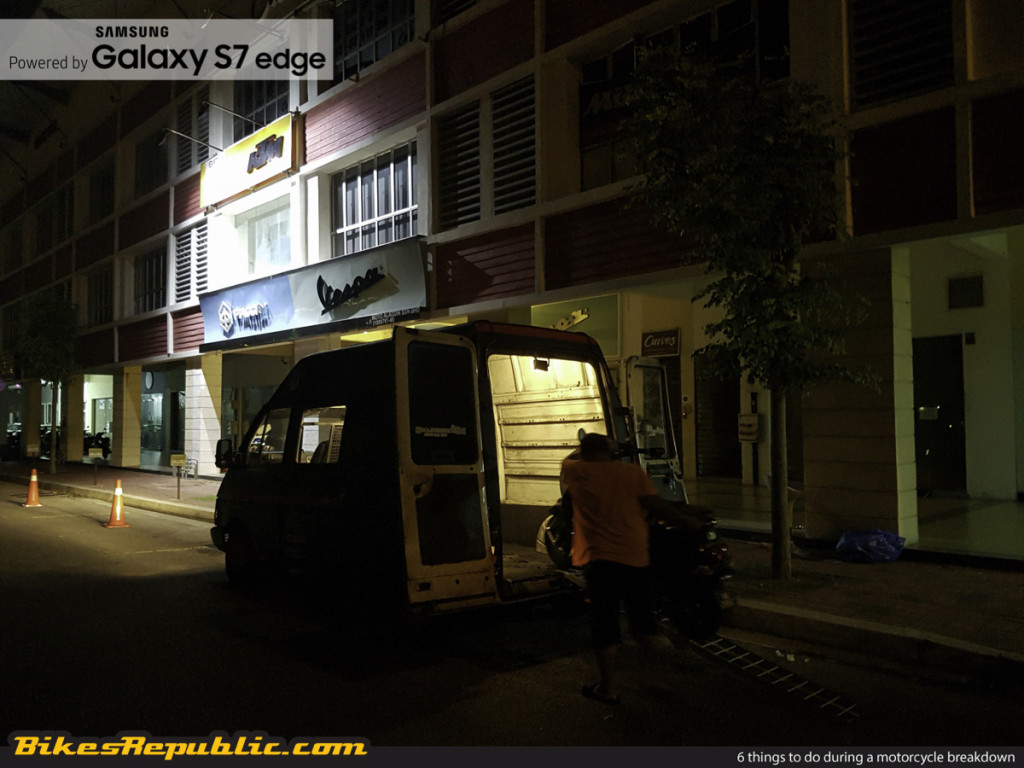
Writer’s note
The scooter I was riding home with a few nights back suffered a snapped belt and forced me to the side of the road. I was fortunate it happened at night where traffic was scarce, and even more fortunate that I managed to park the scooter right across from a lamp post. I was safe under a bright light that kept me visible, and I also had a solid support system through my phone.
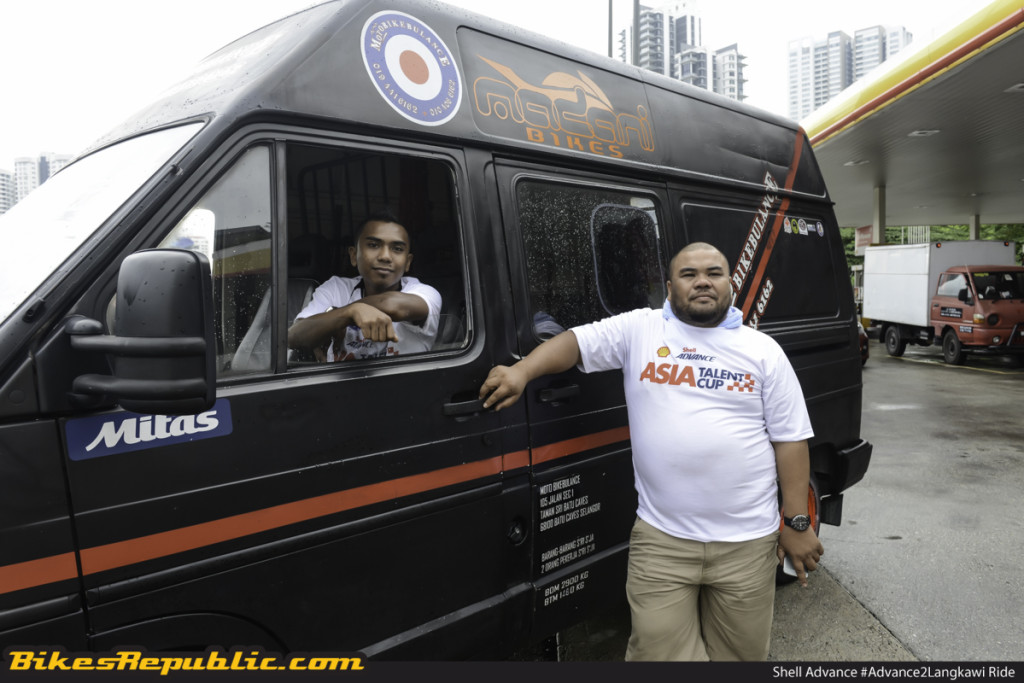
Having engaged them previously during our #Advance2Langkawi ride, Motobike Ambulance quickly came to mind and it only took 23 minutes from my initial phone call until their mechanic, Pablo, rescued me and the bike.
Perhaps the seventh step in this guide that I can give you is to ensure you have a solid support system through your phone. Save the hotlines to reach your insurance provider, mechanic and preferred rescue services in your phonebook because you never know when you’re going to need their assistance.
Again, I’d like to remind you folks to check out our safety riding tips and get yourselves, as well as your bikes, properly ready for the upcoming holidays.



